8 Reasons Ground Turkey Should Be Your Go-To Protein
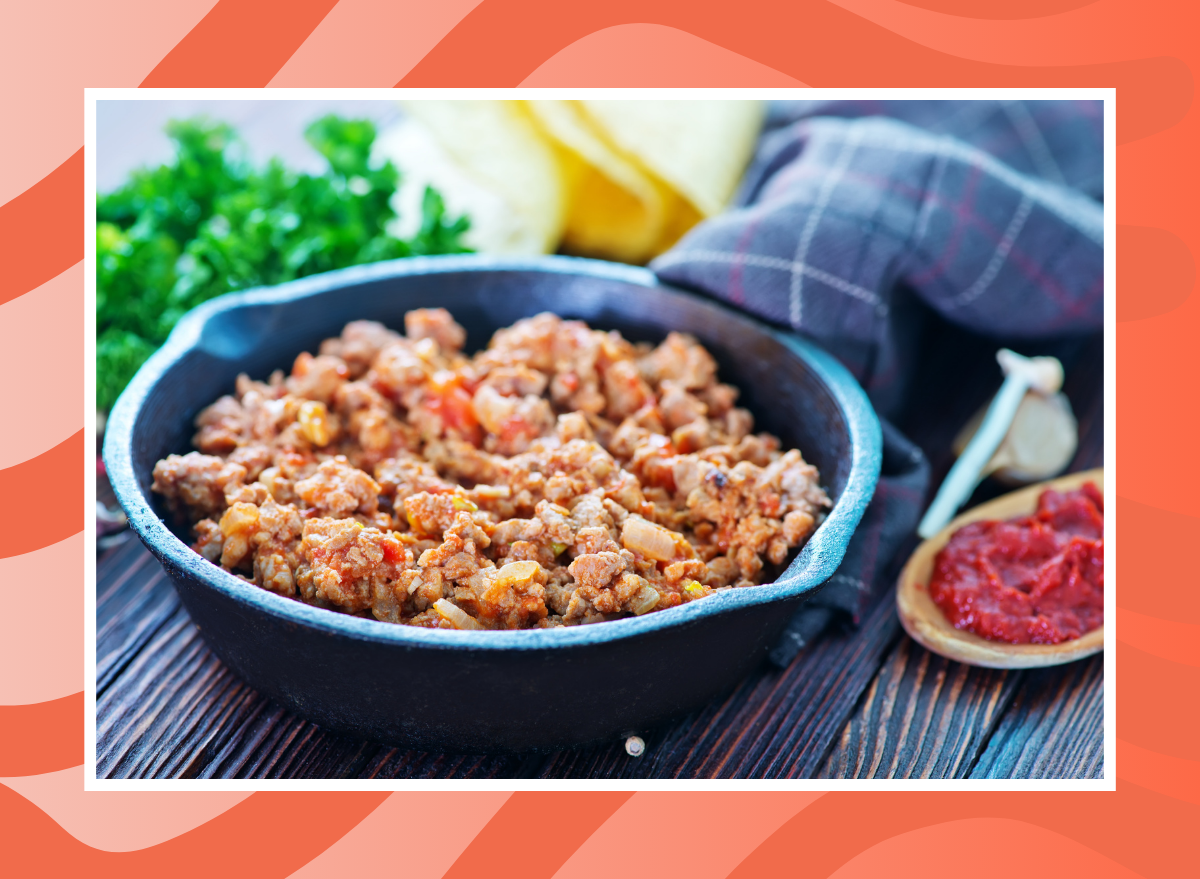
While turkey bacon and deli meat are popular lunchtime staples, opting for ground turkey can offer greater health benefits. For one, fresh ground turkey is available in leaner varieties than ground beef, making it a low-fat, high-protein protein option. Plus, turkey, in general, is a super healthy food, and ground turkey doesn't carry the health risks associated with many processed turkey products.
"Processed turkey products can potentially save you on calories, which makes them a popular pick, but they're usually super high in sodium. One serving of turkey sausage can provide up to 20% of your daily sodium intake," says Sarah Keathley, RD, LD, a dietitian with Top Nutrition Coaching. She also notes that colorectal cancer has been linked to some processed meats and deli products, as "nitrates are often used in the chemical preservation process," she says.
So next time you're at the grocery store, consider skipping the deli counter and reaching for a pack of ground turkey. Not only is it a lean, protein-packed option, but it also comes with several health benefits backed by research. Ahead, we'll dive into the top benefits of eating ground turkey and why it deserves a place in your meal rotation. Then, cook up one of these 31+ Best Healthy Ground Turkey Recipes for Weight Loss.
Ground Turkey Nutrition
According to the USDA Food Database, a 3-ounce serving of ground turkey has the following:
Calories: 173
Fat: 9 g (Saturated Fat: 2.3 g)
Sodium: 66 mg
Carbs: 0 g (Fiber: 0 g, Sugar: 0 g)
Protein: 23 g
Ground turkey is high in protein.
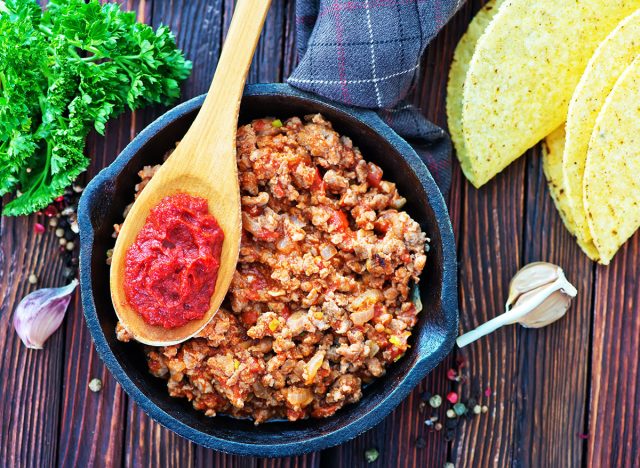
The popular holiday bird is a really good source of quality protein. Three ounces of 93% lean turkey provides 22 grams of protein for under 180 calories. Turkey is a "quality" protein in the sense that it provides a complete amino acid profile with all the essential amino acids needed to build and repair cells.
Protein is essential for nearly every process in our body. "Protein helps with digestion, oxygenation of red blood cells, and hormone regulation," Keathley says. "It's also necessary for us to build and maintain muscle mass and helps with our metabolism." If you regularly lift weights or do other resistance training, you'll want to eat enough protein to build muscle. And if you don't work out, you'll still want to eat enough protein to maintain the muscle mass you do have and support a healthy metabolism.
It's low in saturated fat.
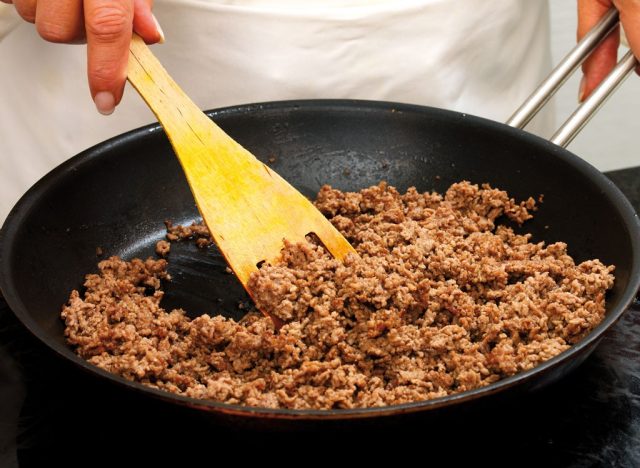
Ground turkey is typically lower in saturated fat than ground beef. When comparing ground turkey and beef, the turkey provides 2.5 grams of saturated fat, while the ground beef has about 4.8 grams of saturated fat per 3-ounce cooked serving.
"Previous research suggests that a diet high in saturated fat can build up in your arteries, causing high cholesterol and raising your levels of LDL cholesterol (the bad type), which can put you at a higher risk for heart disease and stroke," Keathley says. "Although it is important to note that new research is mixed, we still practice this in the healthcare field."
Turkey has heart-healthy fats.
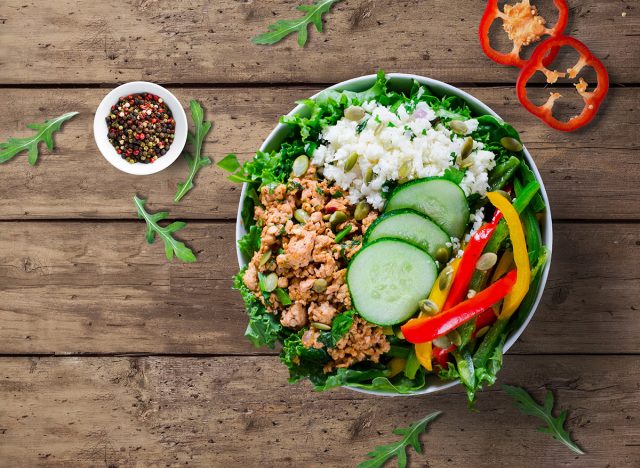
Ground turkey isn't lower in total fat than beef, but it is lower in saturated fat. So, where does the fat come from? It's mostly unsaturated fats, including polyunsaturated and monounsaturated fats.
"Unsaturated fats are a protective healthier fat," Keathley says. "This is important as we are finding research that suggests replacing saturated fat with unsaturated fat can have potential benefits in reducing cardiac events." The American Heart Association recommends eating more unsaturated fats to reduce your bad (LDL) cholesterol levels.
It's rich in vitamins.
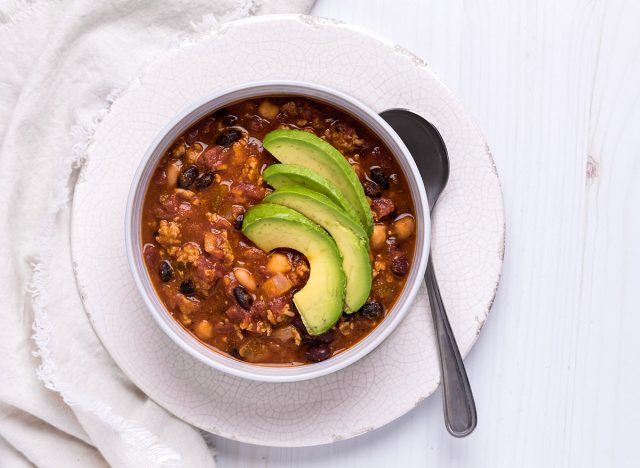
Adding turkey to your weekly meal plan can help you get more B vitamins, which support your overall energy and health. A 3-ounce serving of ground turkey packs 50% of your daily value (DV) of vitamin B3 (also known as niacin), which helps your body turn food into energy, Keathley says. You'll also get 35% of your daily value of vitamin B6 and 56% of your daily value of vitamin B12, which helps create DNA and keep our blood healthy, Keathley says.
It also might be worth shelling out a bit more for pasture-raised turkey, as one 2018 Agriculture study showed that poultry products from grass-fed flocks have less total cholesterol and more vitamins A and E. They also had more healthy omega-3s and a better omega-3 to omega-6 ratio, which helps protect against inflammation.
Ground turkey is high in minerals.
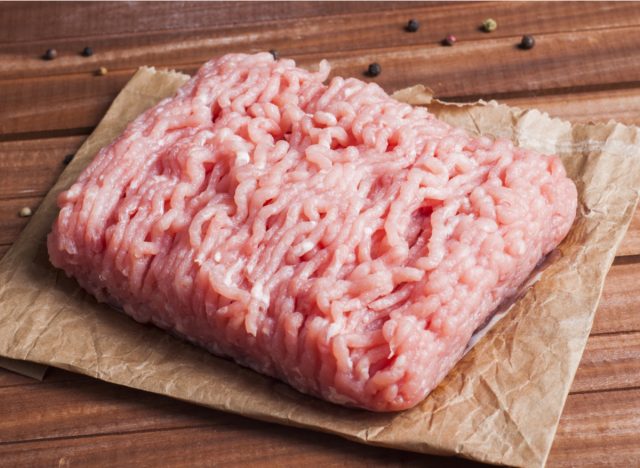
Turkey is a great source of minerals that we often forget about in our diets. Specifically, turkey is an excellent source of selenium and zinc, containing more than 56% of your daily value of selenium and 28% of zinc. And it's a good source of phosphorus, providing 20% of your DV.
"DNA health, bone formation, and cell protection are just a few of the roles these minerals play in the body," Keathley says. Turkey also contains some iron and potassium.
It's affordable and versatile.

Ground turkey is often less expensive and more versatile than other ground meat options. "On average, it is about 40% less per pound than a comparable ground beef product," says Tami Best, RDN, CDN, IFNCP, a dietitian with Top Nutrition Coaching.
While some may call turkey bland, its neutral flavor profile means it can easily be used in a wide range of dishes, taking on the flavor of the other ingredients in the meal.
Here are three ways Keathley likes using ground turkey in her rotation:
- Turkey burgers: Make a lean burger patty with plenty of seasoning and fresh vegetables for topping. Making your own burger patty allows you to be in control of what goes into your burger, Keathley says.
- Turkey tacos: Fill these tacos with spices, peppers, onions, salsa, and black beans for a zesty dish that will provide you with lean protein, fiber, and plenty of nutrients.
- Turkey chili: Fill this chili with vegetables, plenty of seasonings, and your favorite beans. This makes for a lean and hearty dish that's also great for leftovers.
It's high in the amino acid tryptophan.

Ground turkey (like all animal proteins) is a complete source of protein, which means it contains all the amino acids. But it's worth highlighting that poultry is especially rich in the amino acid tryptophan, and "eating a diet high in tryptophan is very important as tryptophan absorption often gets crowded out by other amino acids," Best says.
Tryptophan is a necessary precursor to make the neurotransmitter serotonin, which plays a key role in mood and sleep, so much so that tryptophan depletion has been linked to increases in anxiety, per a study in Neuropsychopharmacology.
Turkey can help with weight loss.

If your goal is to shed some body fat, swap fattier cuts of meat in favor of lean ground turkey. A 3-ounce cooked serving provides 173 calories, 9 grams of fat, and 23 grams of protein. Ounce for ounce, lean ground turkey provides the same amount of protein as ground beef but with fewer calories.
Lean turkey is a great low-calorie source of complete protein — and the low-cal, high-protein combo can help keep you full while supporting your metabolism. Protein helps you maintain lean muscle mass, which supports a faster metabolism and, in turn, weight loss, Best says. "This is important for people looking to lose weight and keep it off."
- Source: https://www.ncbi.nlm.nih.gov/pmc/articles/PMC2661797/
- Source: https://fdc.nal.usda.gov/fdc-app.html#/food-details/171506/nutrients
- Source: https://fdc.nal.usda.gov/fdc-app.html#/food-details/172161/nutrients
- Source: https://www.heart.org/en/healthy-living/healthy-eating/eat-smart/fats/the-facts-on-fats
- Source: https://ods.od.nih.gov/factsheets/Niacin-HealthProfessional/#:~:text=The%20DV%20for%20niacin%20is,high%20sources%20of%20a%20nutrient.
- Source: https://ods.od.nih.gov/factsheets/VitaminB12-HealthProfessional/#:~:text=The%20DV%20for%20vitamin%20B12%20is%202.4%20mcg%20for%20adults,been%20added%20to%20the%20food.
- Source: https://www.mdpi.com/2077-0472/8/6/81
- Source: https://ods.od.nih.gov/factsheets/Selenium-HealthProfessional/
- Source: https://ods.od.nih.gov/factsheets/Zinc-HealthProfessional/#:~:text=The%20DV%20for%20zinc%20is,been%20added%20to%20the%20food.
- Source: https://ods.od.nih.gov/factsheets/Phosphorus-HealthProfessional/#:~:text=The%20DV%20for%20phosphorus%20is,years%20and%20older%20%5B26%5D.
- Source: https://www.ncbi.nlm.nih.gov/pmc/articles/PMC3376328/









